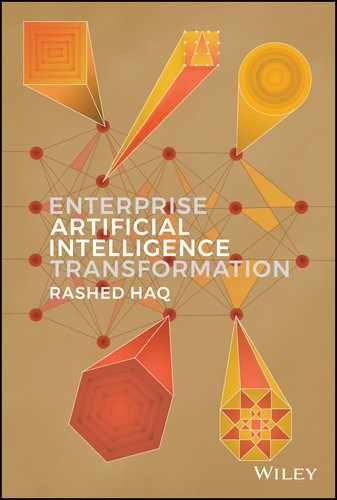Book Description
Enterprise Artificial Intelligence Transformation
AI is everywhere. From doctor's offices to cars and even refrigerators, AI technology is quickly infiltrating our daily lives. AI has the ability to transform simple tasks into technological feats at a human level. This will change the world, plain and simple. That's why AI mastery is such a sought-after skill for tech professionals.
Author Rashed Haq is a subject matter expert on AI, having developed AI and data science strategies, platforms, and applications for Publicis Sapient's clients for over 10 years. He shares that expertise in the new book, Enterprise Artificial Intelligence Transformation.
The first of its kind, this book grants technology leaders the insight to create and scale their AI capabilities and bring their companies into the new generation of technology. As AI continues to grow into a necessary feature for many businesses, more and more leaders are interested in harnessing the technology within their own organizations. In this new book, leaders will learn to master AI fundamentals, grow their career opportunities, and gain confidence in machine learning.
Enterprise Artificial Intelligence Transformation covers a wide range of topics, including:
- Real-world AI use cases and examples
- Machine learning, deep learning, and slimantic modeling
- Risk management of AI models
- AI strategies for development and expansion
- AI Center of Excellence creating and management
If you're an industry, business, or technology professional that wants to attain the skills needed to grow your machine learning capabilities and effectively scale the work you're already doing, you'll find what you need in Enterprise Artificial Intelligence Transformation.
Table of Contents
- Cover
- Foreword: Artificial Intelligence and the New Generation of Technology Building Blocks
- Prologue: A Guide to This Book
- Part I: A Brief Introduction to Artificial Intelligence
- Part II: Artificial Intelligence in the Enterprise
- Part III: Building Your Enterprise AI Capability
- Part IV: Delving Deeper into AI Architecture and Modeling
- Part V: Looking Ahead
- Further Reading
- Acknowledgments
- About the Author
- Index
- End User License Agreement
